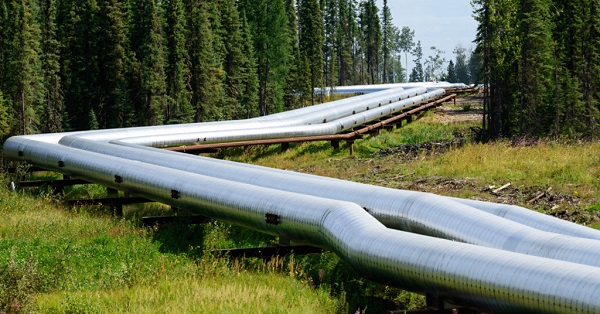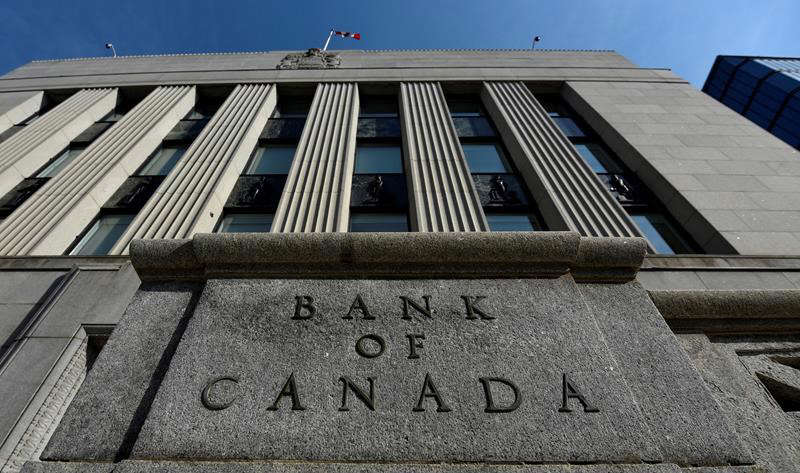Energy
Mark Ruffalo, Hollywood filmmakers wrong about Canadian energy, RBC

Hollywood actors Mark Ruffalo, Rachel McAdams and Joaquin Phoenix are pressuring TIFF to remove RBC as a sponsor because of the bank’s support for Canadian oil and gas. Getty Images photos
From the Canadian Energy Centre
By Deborah JaremkoThey say RBC is not a ‘worthy source of financing’ for Canadian film because of its ongoing support for Canadian oil and gas. They are wrong
A group of Hollywood filmmakers including Mark Ruffalo, Joaquin Phoenix and Rachel McAdams is calling on the Toronto International Film Festival (TIFF) to drop RBC as its main sponsor.
They say RBC is not a “worthy source of financing” for Canadian film because of its ongoing support for Canadian oil and gas. They claim RBC is fueling climate change and disrespecting Indigenous rights.
They are wrong.
RBC is helping fund climate solutions while enabling Indigenous self-determination and prosperity. And Indigenous communities do not want Hollywood to speak for them.
Here are the facts.
Fact: RBC primarily funds Canadian oil and gas, and the world needs more Canadian oil and gas – not less
The world’s growing population needs access to reliable, affordable, responsibly produced energy. And a lot more of it.
According to the United Nations, last November the global population reached 8 billion people, just over a decade after hitting the landmark 7 billion in 2011. Driven by India and China, the world’s population is projected to reach 8.5 billion in 2030 and 9.7 billion 2050.
All those people need energy. Many don’t even have it today, with about 775 million without access to electricity last year, according to the International Energy Agency (IEA).
Even with accelerating investment in low carbon energy resources, the world’s consumption of oil, gas and coal is as high or higher than it has ever been, with both oil and coal demand reaching new records this year, the IEA reports.
The agency projects the world’s total energy consumption – which increased by 15 per cent over the last decade – will increase by a further 24 per cent by 2050.
On the world’s current trajectory, the IEA says oil, gas and coal will account for 62 per cent of world energy supply in 2050, compared to 78 per cent in 2021.
As IEA executive director Fatih Birol said last year, “We will still need oil and gas for years to come… I prefer that oil is produced by countries like Canada who want to reduce the emissions of oil and gas.”
Canada has been a cornerstone of global energy markets and a reliable partner for years, he said.
Fact: Coastal GasLink will help reduce emissions
The Hollywood activists take issue with RBC’s funding of the Coastal GasLink pipeline. This is nonsensical because the project can help reduce emissions in Asia. It also has the support of and is benefiting Indigenous communities.
One of the fastest and most effective ways to reduce emissions is to switch from coal-fired power to power generated from natural gas, traded globally as LNG.
Consider that between 2005 and 2019, emissions from the U.S power sector dropped by 32 per cent because of coal-to-gas switching, according to the U.S. Energy Information Administration.
The LNG Canada project – supplied with Canadian natural gas via Coastal GasLink – will have among the world’s lowest emissions intensity, at 0.15 per cent CO2 per tonne compared to the global average of 0.35 per cent CO2 per tonne, according to Oxford Energy Institute.
Natural gas from LNG Canada alone could reduce emissions in Asia by up to 90 million tonnes annually, or the equivalent of shutting down up to 60 Asian coal plants, the project says. That’s also a reduction of more than the entire emissions of the province of British Columbia, which were 64 million tonnes in 2022.
Expanding Canada’s LNG exports to Asia could reduce emissions by 188 million tonnes per year, or the annual equivalent of taking all internal combustion engine vehicles off Canadian roads, according to a 2022 study by Wood Mackenzie.
“It is a disservice to take the choice of Canadian LNG away from those that need it,” Billy Morin, former chief of the Enoch Cree Nation, said earlier this year.
Fact: Coastal GasLink benefits Indigenous communities
The Coastal GasLink pipeline is enabling shared prosperity between Indigenous communities and Canada’s energy industry.
Not only will it connect to the LNG Canada terminal on the traditional lands of the Haisla Nation – where the project has been transformational for the community, according to Chief Councillor Crystal Smith – but it will also provide natural gas for the proposed Cedar LNG project, in which the Haisla Nation is 50 per cent owner.
“Cedar is not only important from a Haisla perspective, [but from] a global perspective,” Smith says.
“Our territory is not in a bubble and protected from what is happening in Asia and India with coal burning.”
Sixteen First Nations will become 10 per cent owners of the Coastal GasLink pipeline itself once it is completed.
And so far, LNG Canada and Coastal GasLink together have spent more than $5.7 billion with Indigenous-owned and local businesses.
“When there is foreign interference, especially from high-profile celebrities like Ruffalo, it sets us back. He does not think beyond the pipeline. He does not think beyond the cause of the day,” Indigenous policy analyst Melissa Mbarki wrote following a previous attack on Coastal GasLink by the actor.
“Over the long term, such actions serve to drive away investment and keep Indigenous communities in poverty. We are dealing with so many social issues, including high rates of suicide, incarceration and homelessness. Speaking on our behalf is not the answer if you fail to acknowledge the entire story.”
Fact: Indigenous communities speak with their own voices
Ruffalo is a prominent activist against the Coastal GasLink pipeline, often spreading misinformation about the project’s relationship with Indigenous communities. But they are fighting back.
“Hollywood celebrities from outside of Canada are actively campaigning against the Coastal GasLink project, claiming Indigenous People do not support it. However, 20 elected First Nations governments along the route do support it,” the Indigenous Resource Network said in a statement last year.
“Hollywood celebrities are standing in the way of us being able to make our own decisions. Their main goal is to push their agenda and use us as talking points; ultimately, communities are left to pick up the pieces.
“Although their intentions may be to help Indigenous people in Canada, this can be best done by allowing our people to use their own voices. We are able to decide for ourselves what is best for ourselves and our communities.”
Fact: The film industry has its own emissions to deal with
Rather than campaign against Canadian energy projects that can help reduce emissions and foster prosperity for Indigenous communities, Hollywood film makers could be better served addressing the emissions in their own backyard.
A 2020 study by the British Film Institute analyzing the emissions associated with producing movies in the U.S. and U.K. found that films with a budget of $70 million or over generate an average 2,840 tonnes of CO2 pollution.
Air travel alone to support a movie production of this scale generates equivalent emissions of flying one way from London to New York 150 times, BFI said.
Bruce Dowbiggin
Integration Or Indignation: Whose Strategy Worked Best Against Trump?

““He knows nothing; and he thinks he knows everything. That points clearly to a political career.” George Bernard Shaw
In the days immediately following Donald Trump’s rude intervention into the 2025 Canadian federal election— suggesting Canada might best choose American statehood— two schools of thought emerged.
The first and most impactful school in the short term was the fainting-goat response of Canadian’s elites. Sensing an opening in which to erode Pierre Poilievre’s massive lead in the 2024 polls over Justin Trudeau, the Laurentian elite concocted Elbows Up, a self-pity response long on hurt feelings and short on addressing the issues Trump had cited in his trashing of the Canadian nation state.
In short order they fired Trudeau into oblivion, imported career banker Mark Carney as their new leader in a sham convention and convinced Canada’s Boomers that Trump had the tanks ready to go into Saskatchewan at a moment’s notice. The Elbows Up meme— citing Gordie Howe— clinched the group pout.

(In fact, Trump has said that America is the world’s greatest market, and if those who’ve used it for free in the past [Canada] want to keep special access they need to pay tariffs to the U.S. or drop protectionist charges on dairy and more against the U.S.)
The ruse worked out better than they could have ever imagined with Trump even saying he preferred to negotiate with Carney over Poilievre. In short order the Tories were shoved aside, the NDP kneecapped and the pet media anointed Carney the genius skewing Canada away from its largest trade partner to the Eurosphere. We remain in that bubble, although the fulsome promises of Carney’s first days are now coming due.
Which brings us to the second reaction. That was Alberta premier Danielle Smith bolting to Mar A Lago in the days following Trump’s comments. Her goal was to put pride aside and accept that a new world order was in play for Canada. She met with U.S. officials and, briefly, with Trump to remind them that Canada’s energy industry was integral to American prosperity and Canadian stability.
Needless to say, the fainting goats pitched a fit that not everyone was clutching pearls and rending garments in the wake of Trump’s dismissive assessment of his northern neighbours. Their solution to Trump was to join China in retaliatory tariffs— the only two nations to do so— and to boycott American products and travel. Like the ascetic monks they cut themselves off from real life. Trump has yet to get back to Carney the Magnificent

And Smith? She was a “traitor” or a “subversive” who should be keel hauled in the North Saskatchewan. For much of the intervening months she has been attacked at home in Alberta by the N-Deeps and in Ottawa by just about everyone on CBC, CTV, Global and the Globe & Mail. “How could she meet with the Cheeto?”
Nonetheless conservatives in the province moved toward a more independence within Canada. Smith articulated her demands for Alberta to prevent a referendum on whether to remain within Confederation. At the top of her list were pipelines and access to tidewater. Ergo, a no-go for BC’s squish premier David Eby who is the process of handing over his province to First Nations.
It became obvious that for all of Carney’s alleged diplomacy in Europe and Asia (is the man ever home?) he had a brewing disaster in the West with Alberta and Saskatchewan growing restless. In a striking move against the status quo, Nutrien announced it would ship its potash to tidewater via the U.S., thereby bypassing Vancouver’s strike-prone, outdated port and denying them billions.

Suddenly, Smith’s business approach began making eminent good sense if the goal is to keep Canada as one. So we saw last week’s “memorandum of understanding” between Alberta and Ottawa trading off carbon capture and carbon taxes for potential pipelines to tidewater on the B.C. coast. A little bit of something for everyone and a surrender on other things.
The most amazing feature of the Mark Carney/Danielle Smith MOU is that both politicians probably need the deal to fail. Carney can tell fossil-fuel enemy Quebec that he tried to reason with Smith, and Smith can say she tried to meet the federalists halfway. Failure suits their larger purposes. Which is for Carney to fold Canada into Euro climate insanity and Smith into a strong leverage against the pro-Canada petitioners in her province.
Soon enough, at the AFN Special Chiefs Assembly, FN Chief Cindy Woodhouse Nepinak told Carney that “Turtle Island” (the FN term for North America popularized by white hippy poet Gary Snyder) belongs to the FN people “from coast to coast to coast.” The pusillanimous Eby quickly piped up about tanker bans and the sanctity of B.C. waters etc.
Others pointed out the massive flaw in a plan to attract private interests to build a vital bitumen pipeline if the tankers it fills are not allowed to sail through the Dixon Entrance to get to Asia.
But then Eby got Nutrien’s message that his power-sharing with the indigenous might cause other provinces to bypass B.C. (imagine California telling Texas it can’t ship through its ports over moral objections to a product). He’s now saying he’s open to pipelines but not to lift the tanker ban along the coast. Whatever.
Meanwhile the kookaburras of isolation back east continue with virtue signalling on American booze— N.S. to sell off its remains stocks — while dreaming that Trump’s departure will lead to the good-old days of reliance on America’s generosity.
But Smith looks to be wining the race. B.C.’s population shrank 0.04 percent in the second quarter of 2025, the only jurisdiction in Canada to do so. Meanwhile, Alberta is heading toward five million people, with interprovincial migrants making up 21 percent of its growth.
But what did you expect from the Carney/ Eby Tantrum Tandem? They keep selling fear in place of GDP. As GBS observed, “You have learnt something. That always feels at first as if you have lost something.”
Bruce Dowbiggin @dowbboy is the editor of Not The Public Broadcaster A two-time winner of the Gemini Award as Canada’s top television sports broadcaster, his new book Deal With It: The Trades That Stunned The NHL And Changed hockey is now available on Amazon. Inexact Science: The Six Most Compelling Draft Years In NHL History, his previous book with his son Evan, was voted the seventh-best professional hockey book of all time by bookauthority.org . His 2004 book Money Players was voted sixth best on the same list, and is available via brucedowbigginbooks.ca.
Dan McTeague
Will this deal actually build a pipeline in Canada?

By Dan McTeague
Will Carney’s new pipeline deal actually help get a pipeline built in Canada? As we said before, the devil is in the details.
While the establishment and mainstream media cheer on the new pipeline agreement, there are specific details you need to be aware of.
Dan McTeague explains in his latest video.
-

 MAiD2 days ago
MAiD2 days agoFrom Exception to Routine. Why Canada’s State-Assisted Suicide Regime Demands a Human-Rights Review
-

 Business2 days ago
Business2 days agoCarney government should privatize airports—then open airline industry to competition
-

 Business2 days ago
Business2 days agoWhat’s Going On With Global Affairs Canada and Their $392 Million Spending Trip to Brazil?
-

 Bruce Dowbiggin11 hours ago
Bruce Dowbiggin11 hours agoIntegration Or Indignation: Whose Strategy Worked Best Against Trump?
-

 Energy2 days ago
Energy2 days agoCanada following Europe’s stumble by ignoring energy reality
-

 COVID-1912 hours ago
COVID-1912 hours agoUniversity of Colorado will pay $10 million to staff, students for trying to force them to take COVID shots
-

 Business2 days ago
Business2 days agoWhy Does Canada “Lead” the World in Funding Racist Indoctrination?
-

 Banks2 days ago
Banks2 days agoTo increase competition in Canadian banking, mandate and mindset of bank regulators must change






